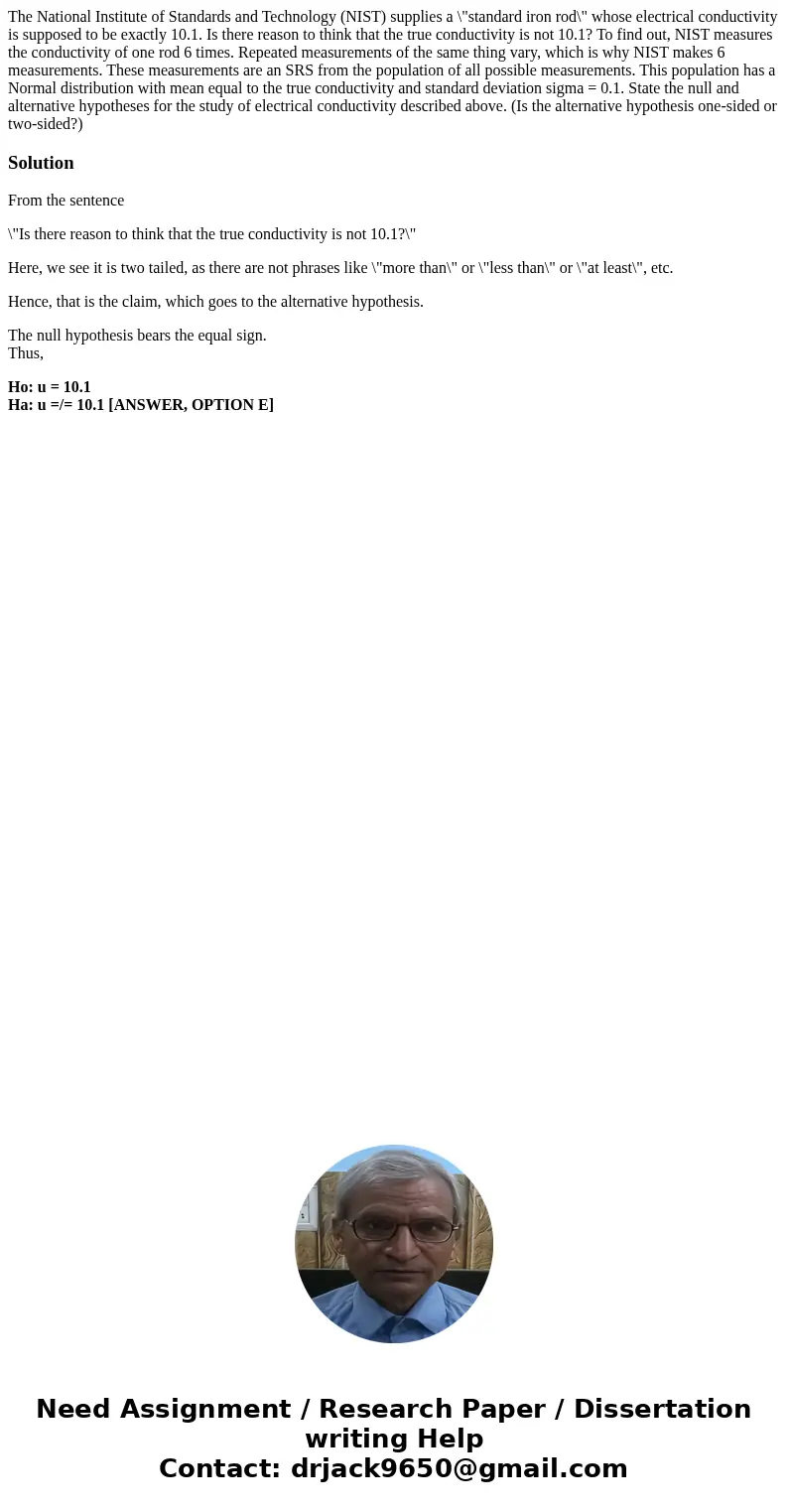The National Institute of Standards and Technology NIST supp
The National Institute of Standards and Technology (NIST) supplies a \"standard iron rod\" whose electrical conductivity is supposed to be exactly 10.1. Is there reason to think that the true conductivity is not 10.1? To find out, NIST measures the conductivity of one rod 6 times. Repeated measurements of the same thing vary, which is why NIST makes 6 measurements. These measurements are an SRS from the population of all possible measurements. This population has a Normal distribution with mean equal to the true conductivity and standard deviation sigma = 0.1. State the null and alternative hypotheses for the study of electrical conductivity described above. (Is the alternative hypothesis one-sided or two-sided?) 
Solution
From the sentence
\"Is there reason to think that the true conductivity is not 10.1?\"
Here, we see it is two tailed, as there are not phrases like \"more than\" or \"less than\" or \"at least\", etc.
Hence, that is the claim, which goes to the alternative hypothesis.
The null hypothesis bears the equal sign.
Thus,
Ho: u = 10.1
Ha: u =/= 10.1 [ANSWER, OPTION E]

 Homework Sourse
Homework Sourse